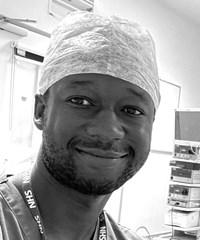ENT features
General overview of endoscopic ear surgery: advantages and principles
The philosophy of endoscopic ear surgery presents surgeons with a tricky concept – does the magnificent view make up for the fact I need to operate with one hand? In this article, Jane Lea discusses the advantages of operating transcanal...
Staying safe during endoscopic ear surgery
There is growing interest in using rigid endoscopes rather than traditional operative microscopes to perform transcanal middle ear surgery. Rigid endoscopy provides a high resolution, wide-angle view of the tympanic cavity through minimally invasive surgical portals. In this article, Elliott...
Video otology tutorials: how EES changes the game
High definition endoscopic ear surgery (EES) redefines traditional middle ear anatomical perspectives. The surgeon can observe in situ anatomical relationships with angled objectives in a way that the traditional microscopic view, with step-wise removal of structures is unable to achieve....
Endoscopic ear surgery in children
The benefits of endoscopes in otologic surgery, which have become increasingly widely appreciated in recent years, are very well suited to the management of paediatric middle ear disease. Although one might imagine that the smaller ear canal of a child...
TWJ Fellowship – Toronto 2015: Endoscopic Ear Surgery
The Thomas Wickham Jones (TWJ) Foundation is a charitable trust with the aim of helping patients with deafness overcome their disability. Striving to achieve this goal they provide educational grants to otolaryngologists and other related audiological professionals working within the...
Endoscopic middle ear surgery for cholesteatoma treatment
A critical question when any new technique is proposed is ‘does it work?’ In this article Daniele Marchioni and Davide Soloperto discuss the success rates of endoscopic ear surgery for cholesteatoma. Introduction Surgical management of cholesteatoma is still a controversial...
Patient and public involvement in research
One step further from involving patients in setting research priorities is to involve them in the planning and recruitment stages of the subsequent trials and studies. Here, Carl Philpott and Aneeka Degun explain the concept of Patient and Public Involvement...
Superior semicircular canal dehiscence syndrome
In this article, Hannah North and Simon Lloyd give us an overview of the complex condition of superior semicircular canal dehiscence (SSCD) syndrome, including diagnosis, treatment and management. Superior semicircular canal dehiscence (SSCD) is a bony defect of the otic...
William Hunter’s work on the anatomy of the human ear
The Hunterian Society offers an annual award for an essay and presentation on a subject of relevance to John or William Hunter, or medicine in the 18th Century. This article is based on Emma Stapleton’s 2014 winning essay, which was...
Sir Terence Edward Cawthorne (1902-1970): first Chairman of the BACO Academic Committee
Sir Terence Cawthorne was the chairman of the academic committee of the first BACO in 1963, and was Master of the second BACO in 1967. In this article, Neil Weir describes the life and career of one of the UK’s...
Hearing and balance clinical trials network (HEARING CTN)
About the HEARING CTN The HEARING CTN is a new UK research network focused on promoting research collaboration and supporting high quality research studies, with the aim of improving the evidence supporting the diagnosis and management of hearing loss and...
Genetic discovery using animal models: presbyacusis
By their very nature, late-onset hereditary disorders offer a large window of opportunity for therapeutic intervention. However, before we can begin to think about strategies we need knowledge of the genetics and pathology underlying the condition. In this article we...




















